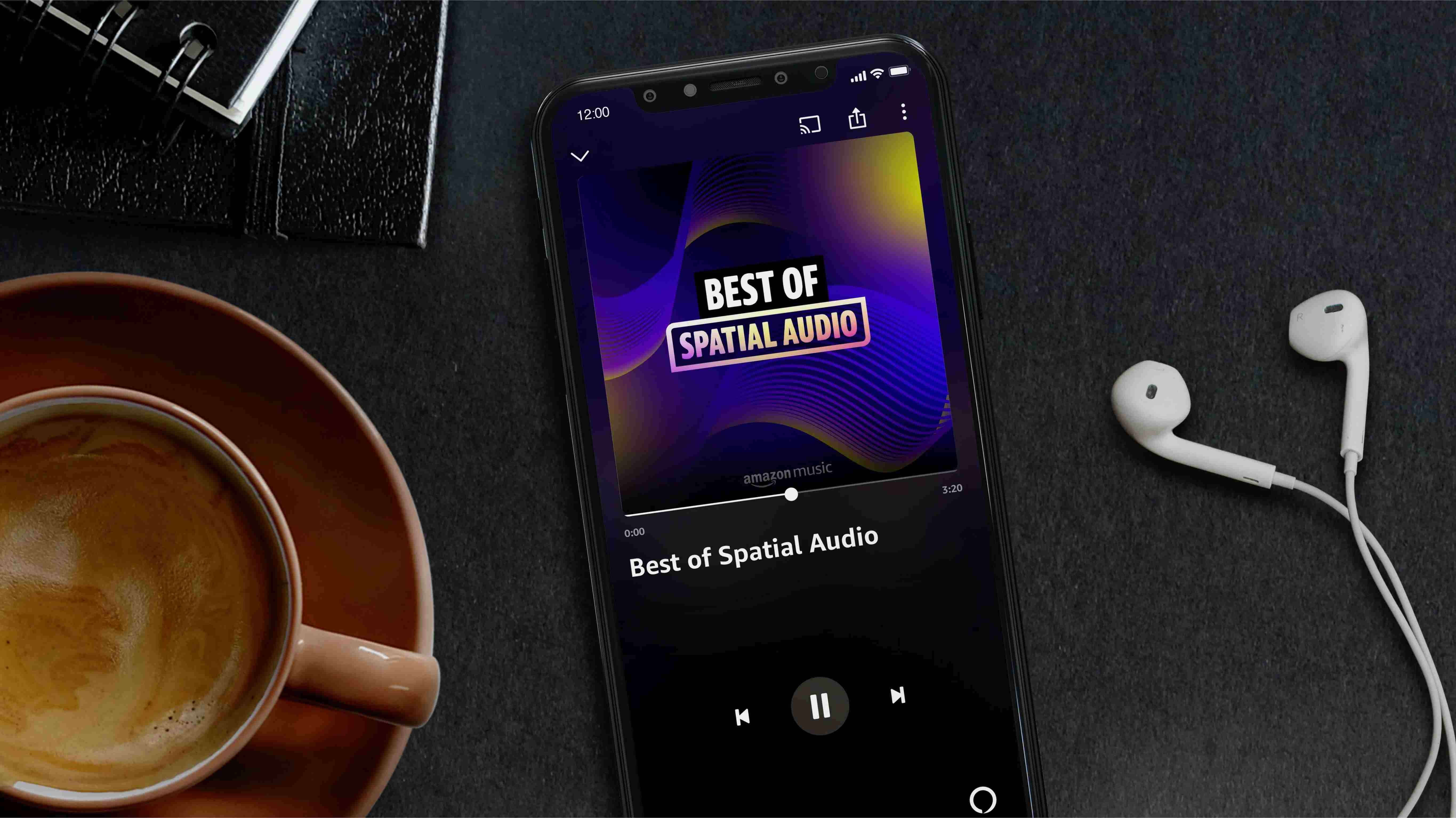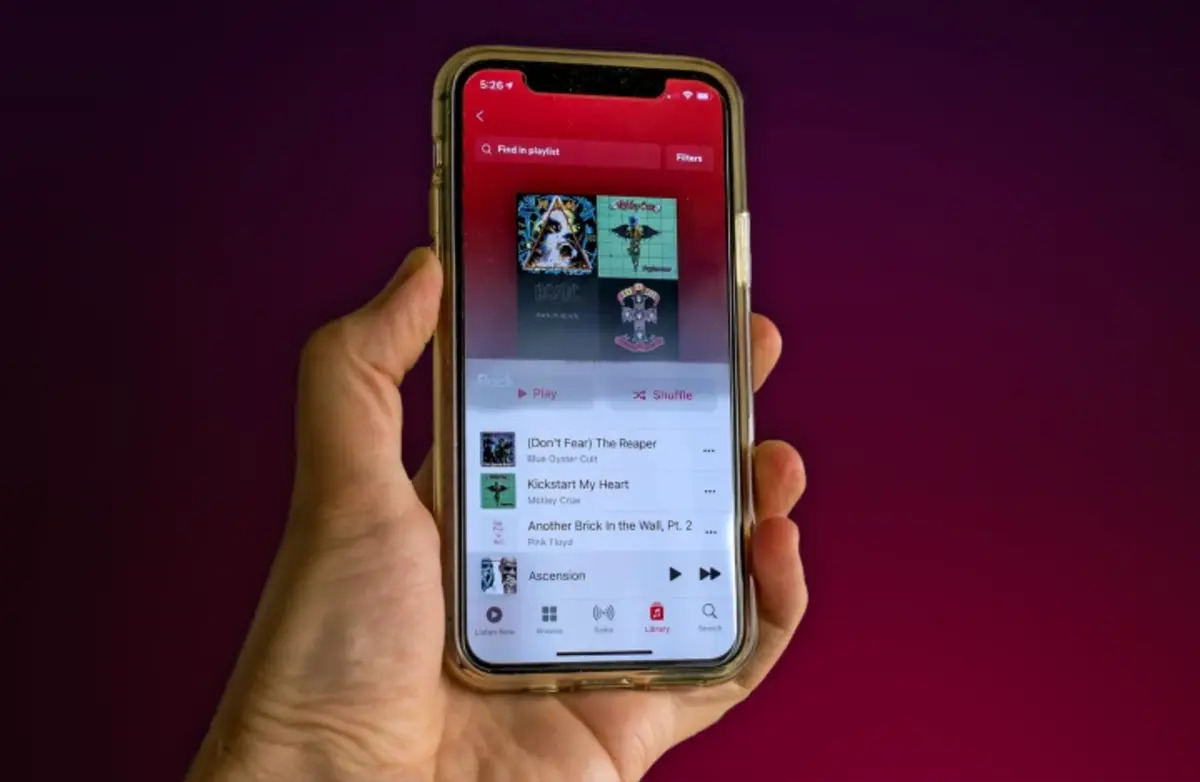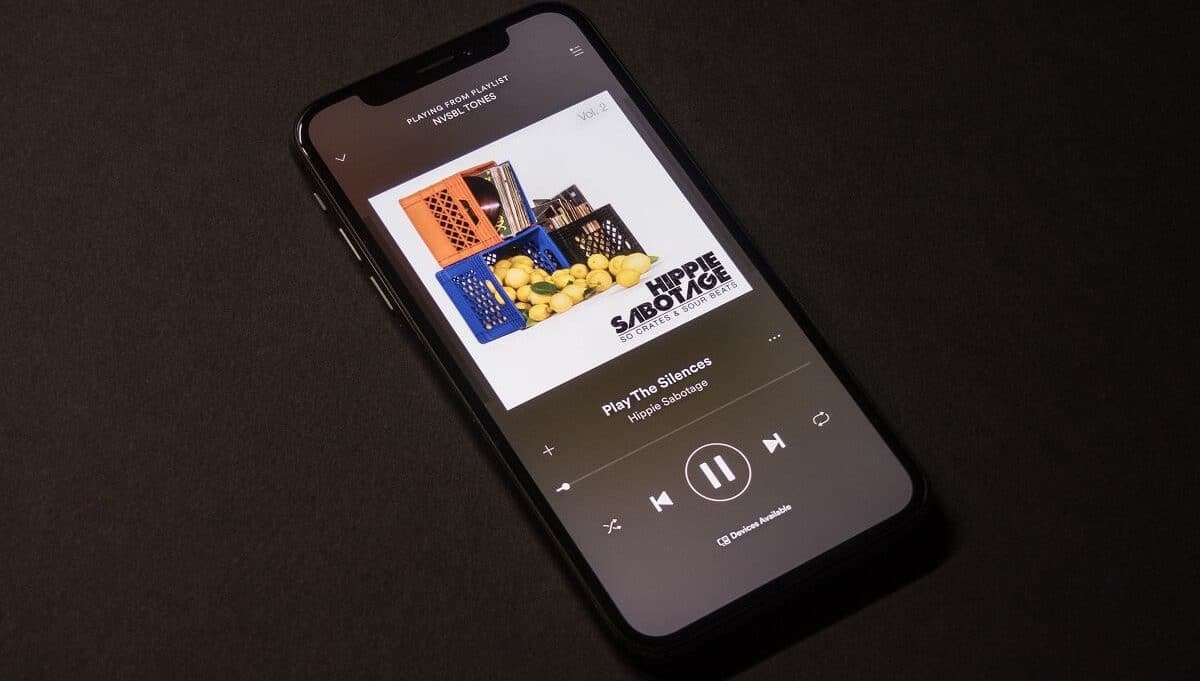Introduction
Imagine embarking on a long flight, where you will be disconnected from the internet for several hours. While the thought of being cut off from the digital world may seem daunting, there is a simple solution to keep yourself entertained – downloading music for your plane journey.
Having a selection of your favorite songs readily available on your device can make your flight more enjoyable and help pass the time. In this article, we will guide you through the process of downloading music for your plane ride, ensuring that you have a personalized playlist to keep you company.
Whether you are a frequent traveler or someone preparing for their first flight, this comprehensive guide will equip you with the knowledge and tools to download music reliably. From choosing the right music download app to organizing your downloaded tracks, we will cover it all.
So, fasten your seatbelts and join us as we dive into the world of music downloads for the plane!
Choosing the Right Music Download App
When it comes to downloading music for your plane journey, the first step is to choose the right music download app. There are several options available, each with its own features and user interface. To ensure a smooth experience, consider the following factors:
- Compatibility: Make sure the app is compatible with your device’s operating system, whether it’s iOS, Android, or any other.
- User-Friendly Interface: Look for an app that is easy to navigate, with a clean and intuitive interface.
- Large Music Library: Opt for an app that offers a vast music library, giving you access to a diverse range of songs and genres.
- Offline Listening: Check if the app allows you to download music for offline listening, ensuring that you can enjoy your favorite tracks even without an internet connection.
- Sound Quality: Consider the app’s audio quality, as it significantly impacts your listening experience.
Some popular music download apps that check all these boxes include Spotify, Apple Music, Amazon Music, and Google Play Music. These apps offer a wide selection of songs and provide an option to download music for offline listening. Take your time to explore their features and choose the one that best suits your preferences and music needs.
Remember to review user ratings and read reviews to get insights into the app’s performance and reliability. Additionally, you can try out the free versions or trial periods available for certain apps to get a firsthand experience before making a final decision.
Now that you understand the key considerations when choosing a music download app, the next step is to find the best music download websites. Let’s explore that in the next section.
Finding the Best Music Download Websites
While music download apps provide a convenient way to access and download songs, you may also want to explore music download websites to expand your collection even further. These websites offer a vast array of music genres, including the latest releases, classic hits, and underground tracks. Here are some tips to help you find the best music download websites:
- Reputation and Legality: It is important to choose reputable and legal music download websites to ensure that you are downloading music legally and supporting the artists. Look for websites that have licensing agreements with record labels and artists.
- User-Friendly Interface: Opt for websites with a user-friendly interface that allows for easy navigation and search functionality. This will help you find and download your favorite songs quickly.
- Music Library: Consider the size and diversity of the music library offered by the website. The broader the selection, the more likely you are to find the songs you want.
- Audio Quality: Look for websites that offer high-quality audio files, such as MP3 or FLAC formats, ensuring the best listening experience.
- Download Options: Check if the website allows you to download music directly or offers links to trusted platforms for downloading.
Some popular and reputable music download websites include Bandcamp, SoundClick, Jamendo, and Last.fm. These platforms offer a wide range of music genres and support independent artists, making it a great opportunity to discover new and emerging talents.
Before downloading from any website, make sure to read the terms of use and check if the website requires registration or payment for access to downloads. Keep in mind that while there may be free options available, it is always good to support the artists and purchase music when possible.
By exploring these music download websites, you will be able to create a diverse and personalized collection of songs for your plane journey. In the next section, we will discuss the importance of understanding music copyright laws to ensure you are downloading and using music legally.
Understanding Music Copyright Laws
When it comes to downloading and using music, it is crucial to have a basic understanding of music copyright laws. Copyright is a legal right that grants exclusive ownership to the creator of a work, including musical compositions and recordings. Here are some key points to consider:
1. Ownership and Rights: The copyright for a song is typically owned by the songwriter or composer. They have the right to control how their music is used, reproduced, distributed, and performed.
2. Licensed Music: Some music is licensed for specific uses, such as commercial use in films, advertisements, or other public performances. Downloading licensed music without proper authorization may result in legal consequences.
3. Public Domain: Certain works fall into the public domain, meaning their copyright has expired, or they have been released to the public. These works can be freely downloaded and used without any legal restrictions.
4. Fair Use: Fair use is a legal principle that allows limited use of copyrighted material without obtaining permission from the copyright owner. However, the rules for fair use can be complex and vary depending on the purpose and nature of the use. It is advisable to seek legal advice if you are unsure about fair use.
5. Digital Millennium Copyright Act (DMCA): The DMCA is a US law that governs copyright issues related to the digital environment. It provides guidelines for addressing copyright infringement online and protecting the rights of copyright holders.
It is important to respect copyright laws when downloading and using music. To ensure you are downloading music legally, consider the following:
– Purchase Music: Support the artists by purchasing their music from official platforms, such as iTunes, Google Play Music, or Bandcamp. This ensures that the artists receive fair compensation for their work.
– Use Licensed Music: If you intend to use music for commercial purposes or public performances, obtain the necessary licenses or permissions from the copyright holders.
– Check Public Domain: When downloading music from websites or platforms, verify that the songs are in the public domain or have been released under Creative Commons licenses that allow for free and legal use.
By understanding and respecting music copyright laws, you can enjoy your downloaded music with peace of mind, knowing that you are acting within legal boundaries. Now that you are aware of the importance of copyright laws, let’s explore how to download music from YouTube in the next section.
Downloading Music from YouTube
YouTube is a vast platform that hosts a wide range of music videos and audio tracks. While YouTube does not allow direct downloads of its content, there are ways to download music from YouTube for offline listening. Here’s how:
1. Online Converters: There are various online converters available that allow you to convert YouTube videos into downloadable audio files. Simply copy the URL of the YouTube video containing the music you want and paste it into the converter. Select the audio format you prefer (such as MP3 or WAV) and initiate the conversion process. Once the conversion is complete, you can download the converted audio file to your device.
2. Video Downloading Tools: There are also dedicated video downloading tools that allow you to download YouTube videos, including the audio content. These tools usually come in the form of browser extensions or standalone software. Install the tool of your choice, navigate to the YouTube video with the desired music, and initiate the download. From there, you can extract the audio track from the downloaded video file.
It’s important to note that downloading music from YouTube should only be done for personal use or if you have obtained the necessary permissions from the copyright holder. Respect the rights of the creators and avoid distributing or monetizing the downloaded music without proper authorization.
Downloading music from YouTube can be a practical way to access your favorite songs for offline listening. However, there are other popular music streaming platforms that offer legal and convenient options for offline listening. One such platform is Spotify, which we will explore in the next section.
Saving Music Offline on Spotify
Spotify is a popular music streaming platform that offers a vast library of songs from various genres and artists. One of the features that makes Spotify a favorite among music enthusiasts is its offline listening capability. With Spotify Premium, you can save music offline and enjoy your favorite tracks without an internet connection. Here’s how you can save music offline on Spotify:
1. Upgrade to Spotify Premium: To access the offline listening feature, you will need to upgrade to Spotify Premium. This subscription-based service removes ads and allows you to download music for offline use.
2. Create a Playlist: Open the Spotify app on your device and create a playlist specifically for your offline music. You can name it anything you like and include all the songs you wish to save for offline listening.
3. Save Playlist for Offline Use: Once you have created your playlist, toggle the “Download” switch to save it for offline use. Spotify will then download the songs in the playlist to your device, making them accessible even without an internet connection. You can find your downloaded playlists in the “Your Library” section of the app.
4. Keep Spotify Updated: To ensure a smooth offline listening experience, make sure to keep your Spotify app updated. This will ensure that you have access to the latest features and bug fixes.
With Spotify’s offline feature, you can now enjoy your favorite songs anytime, anywhere, without worrying about internet connectivity. It’s important to note that offline music on Spotify is only accessible as long as you have an active Spotify Premium subscription. If your subscription expires, you will no longer be able to access the offline tracks. Additionally, downloaded music from Spotify is encrypted and cannot be shared or transferred to other devices or platforms outside of the Spotify app.
Now that you know how to save music offline on Spotify, let’s explore another popular platform for downloading and streaming music – SoundCloud.
Downloading Music from SoundCloud
SoundCloud is a popular platform for discovering and streaming music from a wide range of independent artists and musicians. While SoundCloud primarily focuses on streaming, there are ways to download music from the platform for offline listening. Here’s how you can download music from SoundCloud:
1. SoundCloud Downloaders: There are several third-party websites and online tools available that allow you to download music from SoundCloud. These SoundCloud downloaders typically require you to paste the URL of the SoundCloud track you want to download. Once you enter the URL, you can choose the audio format and initiate the download.
2. Browser Extensions: Some browser extensions, such as SoundCloud Downloader, add a download button directly on the SoundCloud website. With these extensions installed, you can simply click the download button next to the track you want to save, and it will be downloaded to your device.
It’s important to note that not all tracks on SoundCloud are available for download. Artists can choose whether or not to enable downloading for their tracks. Respect the rights of the artists and avoid downloading or sharing their music without permission or in violation of their terms and conditions.
Downloading music from SoundCloud allows you to have a collection of your favorite tracks for offline listening. However, it’s worth mentioning that SoundCloud also offers a “Go+” subscription plan that allows you to save tracks for offline listening directly within the SoundCloud app.
By using either third-party downloaders or official features within the SoundCloud app, you can enjoy your favorite tracks from SoundCloud even without an internet connection. Take advantage of this feature to curate your personal music collection for your plane journey or any other offline listening needs.
Now that you know how to download music from SoundCloud, let’s move on to the next step – transferring the downloaded music to your phone or tablet.
Transferring Music to Your Phone or Tablet
Once you have successfully downloaded music onto your computer or laptop, the next step is to transfer it to your phone or tablet for on-the-go listening. While there are various methods to transfer music, here are a few commonly used options:
1. USB Cable: The most straightforward method is to connect your phone or tablet to your computer using a USB cable. Once connected, your device should be recognized by your computer as an external storage device. Simply locate the downloaded music on your computer and copy and paste it into the music folder on your phone or tablet.
2. Cloud Storage Services: Another popular option is to use cloud storage services like Google Drive, Dropbox, or OneDrive. Upload the downloaded music to your preferred cloud storage platform from your computer and install the corresponding app on your phone or tablet. Sign in to your account and download the music files to your mobile device for offline listening.
3. Bluetooth Transfer: If both your computer and mobile device have Bluetooth capabilities, you can transfer music wirelessly. Pair your computer and mobile device via Bluetooth, select the music files you want to transfer, and send them to your phone or tablet from your computer. The files will appear in the appropriate music folder on your mobile device.
4. Wi-Fi Transfer Apps: There are also dedicated Wi-Fi transfer apps available that allow you to transfer files wirelessly between your computer and mobile devices. These apps create a local network connection and enable seamless file transfers over Wi-Fi without the need for cables or cloud storage services.
Choose the method that best suits your preferences and the tools you have at hand. Ensure that your phone or tablet has sufficient storage space to accommodate the transferred music files. Once the transfer is complete, you can enjoy your downloaded music on your device, even when offline.
Remember to organize your downloaded music to make it easier to navigate and find your favorite tracks. In the next section, we will provide some tips on how to efficiently organize your downloaded music collection.
Organizing Your Downloaded Music
Having a well-organized music collection allows you to easily locate and enjoy your favorite tracks. When it comes to organizing your downloaded music, there are several methods you can use. Here are some tips to help you efficiently organize your downloaded music:
1. Create Folders: Start by creating folders based on specific criteria, such as genre, artist, or album. This will help you categorize your music and make it easier to locate specific songs or albums. You can create folders within the music folder on your device or use a dedicated music management software.
2. Add Metadata: Ensure that your music files have correct and complete metadata, including song titles, album names, artist names, and genre. This information is embedded within the file and can be edited using various media players or music management software. Having accurate metadata makes it easier to search and sort your music.
3. Use Playlist: Create playlists based on different moods, occasions, or themes. Playlists allow you to group songs together based on your preferences and create personalized listening experiences. You can create playlists directly within music player apps or your preferred music management software.
4. Tagging: Consider using tagging systems to categorize and organize your music. Tags act like labels and allow you to assign multiple attributes to each song. For example, you can tag songs with indicators like “upbeat,” “relaxing,” or “party” to easily filter and find specific types of music.
5. Backup Your Collection: It is advisable to create regular backups of your downloaded music collection. This ensures that you won’t lose your music in case of device damage or data loss. Use external hard drives, cloud storage, or dedicated backup software to create backups and safeguard your music library.
By implementing these organization techniques, you can maintain a well-structured and easily navigable music library. Regularly review and update your organizational system as your music collection grows and evolves.
Now that you have successfully organized your downloaded music, you are ready to embark on your plane journey with a personalized playlist. In the next section, we will provide a brief recap of the key points covered in this article.
Conclusion
Downloading music for your plane journey is a simple yet effective way to ensure you have a personalized playlist that keeps you entertained during your flight. By following the steps outlined in this guide, you can successfully download music, create playlists, and transfer them to your phone or tablet for offline listening.
First, choose the right music download app that meets your preferences and offers offline listening capabilities. Explore reputable music download websites and be mindful of music copyright laws to ensure that you are downloading and using music legally.
Discover the methods for downloading music from YouTube and SoundCloud, respecting the rights of the creators and using the downloaded content for personal use. Take advantage of Spotify’s offline feature or other streaming platforms that allow you to save music for offline listening.
Once you have downloaded your favorite tracks, transfer them to your phone or tablet using methods like USB cables, cloud storage services, Bluetooth transfer, or Wi-Fi transfer apps. Finally, organize your downloaded music collection by creating folders, adding metadata, using playlists, and implementing tagging systems.
Remember to respect copyright laws, support the artists by purchasing their music when possible, and consider subscribing to streaming services that compensate artists fairly. Enjoy your offline music collection on your plane journey, during workouts, or any other time when you are without an internet connection.
Now that you have all the tools and knowledge needed to download music for your plane journey, go ahead and curate a fantastic playlist that will enhance your travel experience. Sit back, relax, and enjoy the music during your flight!

























